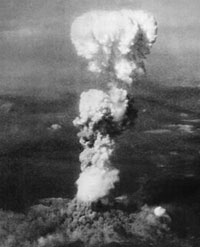Front Page
-
Choctaw Grand Theater in Durant welcomes Southern rock legends Lynyrd Skynyrd to the stage Friday, November 21, 2025. The band gained worldwide recognition for its live performances and signature songs "Sweet Home Alabama" and "Free Bird."
-
Visit McKinney is pleased to announce the addition of Sarah Nolting as the organizations new Senior Communications & Media Specialist. Nolting brings a strong background in tourism, marketing, and municipal communications. "Tourism has always been where my heart is," Nolting said. "There's something truly special and incredibly rewarding about helping people discover what makes a destination unique. I am thrilled to now do that with McKinney — a city with a rich story and vibrant history."
-
Fannin County Commissioners Court managed to hold civil conversations during most of its regular meeting Tuesday before bedlam broke out over the same subject that has plagued this court for eight months - the condition of the courthouse and six trumped up indictments that were summarily dismissed by the first person outside of Fannin County to examine this regrettable situation.
-
Dollar General is helping families and educators shop smarter this back-to-school season with budget-friendly school and classroom essentials, including an expansive assortment of supplies priced $1 or less.
-
Robert Earl Keen, one of the most beloved Texas singer/songwriters and a true Americana music icon, returns to our stage Saturday, October 18 with very special guest Race Ricketts. Tickets and reserved tables go on sale this Friday, June 13 at 10:00 a.m.
-
1945 – World War II: Hiroshima, Japan is devastated when the atomic bomb "Little Boy" is dropped by the United States B-29 Enola Gay. Around 70,000 people are killed instantly, and some tens of thousands die in subsequent years from burns and radiation poisoning. After being selected in April 1945, Hiroshima was spared conventional bombing to serve as a pristine target, where the effects of a nuclear bomb on an undamaged city could be observed. The blast from a nuclear bomb is the result of X-ray-heated air (the fireball) sending a shock wave or pressure wave in all directions, initially at a velocity greater than the speed of sound. The bomb was dropped at approximately 08:15 (JST) on 6 August 1945. After falling for 44.4 seconds, the time and barometric triggers started the firing mechanism. The detonation happened at an altitude of 1,968 ± 50 feet (600 ± 15 m). It was less powerful than the Fat Man, which was dropped on Nagasaki, but the damage and the number of victims at Hiroshima were much higher, as Hiroshima was on flat terrain, while the hypocenter of Nagasaki lay in a small valley. According to figures published in 1945, 66,000 people were killed as a direct result of the Hiroshima blast, and 69,000 were injured to varying degrees. Later estimates put the deaths as high as 140,000 people.




















